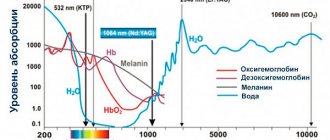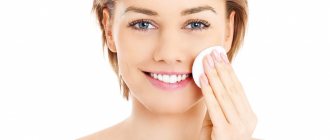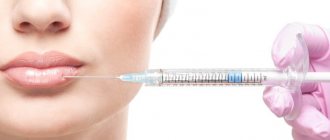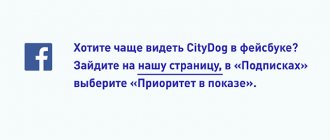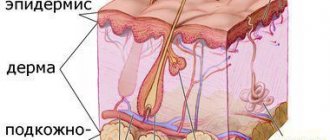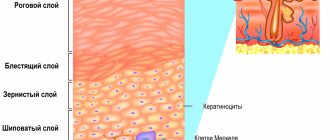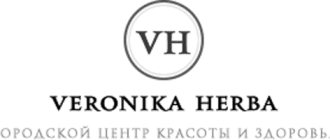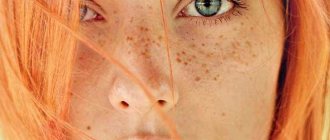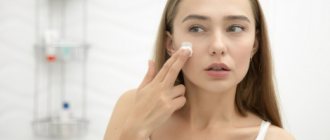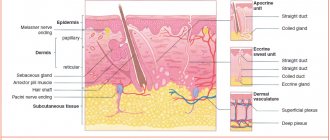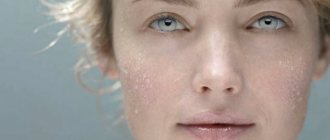The creation of the first laser changed the world forever. The discovery of ablative laser technologies forever changed the hardware cosmetology market, making it easier to carry out non-surgical corrections of cosmetic skin defects.
Analysts predict an increase in cases of scar correction and rejuvenation using laser resurfacing. The average annual rate will be 10.29% in 2020–2026. and will reach US$29.5 billion by 2026.
Currently, two types of ablative lasers dominate the market - CO2 and Er:YAG, and it is very difficult to say right away which laser system is better.
The carbon dioxide (CO2) laser was developed in 1964, and therefore has found wide application in surgery, dermatology, cosmetology, urology, proctology, otolaryngology, and gynecology. The Er:YAG laser appeared in 1987 and is currently used in dermatology, cosmetology and gynecology.
Carrying out laser rejuvenation using a continuous technique (continuous ablation) allows the generation of precisely controlled radiation for surgical purposes (vaporization) with precise control of thermal damage and relative hemostasis, as well as for use in dermatological and aesthetic purposes with the possibility of flexible control of tissue heating during procedures.
Dividing the beam into fractions made it possible to create the “fractional resurfacing” method, which forever replaced the “continuous ablation” method with its disadvantages (long rehabilitation period, high risk of infection and the appearance of skin dyschromia).
Before moving on to comparing these two laser devices, let's consider the effects that are realized in the skin due to the absorption of energy through its transformation into heat. Radiation absorbed by chromophores causes a local increase in temperature, which in turn can lead to irreversible changes.
With increasing intensity of exposure, the heating temperature of the tissue increases, accompanied by the following processes:
- Stimulation of intracellular processes (37.5 – 39 °C)
- Protein denaturation and membrane destruction (at 40 – 45 °C)
- Coagulation and necrosis (60 °C)
- Dehydration (100 °C)
- Carbonation (150 °C)
- Vaporization (over 300 °C)
Rice.
1. Absorption curve. It is also worth emphasizing that the various thermal effects of laser radiation on tissue are never observed separately and are always present, however, the size of these zones depends on the wavelength of the laser system.
Rice. 2. Ablation zones and thermal effect (coagulation) zone: on the left side - Er:YAG, on the right side - CO2.
CO2 laser systems have a wavelength of 10,600 nm, while erbium laser systems have a wavelength of 2940 nm, while the energy absorption coefficient of the chromophore (water molecule) for this laser system is 12,000 cm-1, for a CO2 laser - 800 cm-1 . This suggests that the wavelength emitted by the erbium laser is absorbed 12 to 15 times higher than that of CO2. This leads to a difference in the thermal effect, namely in the size of the coagulation zone.
Rice. 3. The coagulation zone on a CO2 laser is 100-160 microns (depending on the set parameters), the coagulation width on an erbium laser does not exceed 30 microns.
A small zone of Er:YAG tissue coagulation allows minimizing the rehabilitation period with a good clinical effect.
In foreign studies 1998–2010. comparisons of the two laser systems were carried out on large groups of subjects. For example, in one study, patients aged 18 to 88 years with perioral and periorbital scars and involutive skin changes were selected. One half of the face was treated with a CO2 laser, the other with Er:YAG. The treatment method is continuous ablation. The effect was assessed 1 day, 7 days, 6 months after the procedure.
Rice. 4. Patient on the 1st day after laser resurfacing. Right side – CO2, left – Er:YAG. This patient was unable to open his right eye for 24 hours after the procedure due to swelling!
Rice. 5. The same patient 7 days after laser resurfacing. The side treated with the CO2 laser (right) continued to have erythema and swelling, unlike the side treated with the erbium laser.
Rice. 6. Another patient 7 days after laser resurfacing. There is greater swelling and hyperemia of the skin on the CO2-treated side (right) as opposed to the Er:YAG-treated left side.
Rice. 7. Skin biopsy (continuous laser resurfacing method): Left – Er:YAG, right – CO2.
Rice. 8. Periorbital wrinkles. The left half of the face is Er:YAG, the right half of the face is CO2. The right photo is the result 6 months after the procedure.
Rice. 9. Oral wrinkles. The left half of the face is Er:YAG, the right half of the face is CO2. The right photo is the result 6 months after the procedure.
In a group of patients with involuting wrinkles of the periorbital and oral zones (age 65–80 years), positive dynamics were noted on both halves of the face, however, the lifting effect of deep skin wrinkles was better expressed on the side treated with a CO2 laser system.
Carbon dioxide (CO2) laser systems certainly make it possible to cope with a wide range of problems, especially when it comes to pronounced hypertrophic and post-acne scars of the skin due to a more pronounced thermal effect, which causes contracture of the protein due to a pronounced coagulation zone → expansion of the blood vessels of the dermis → release of pro-inflammatory cytokines → the beginning of fibrin retraction and polymerization → the start of neocollagenesis.
But what to do when it comes to atrophic skin scars?
After all, atrophic scars arise as a result of a reduced response of connective tissue to injury, as a result of which insufficient collagen is formed. The study by Tay and Kwok (2008) involved 150 volunteers with three types of atrophic scars: V-shaped, M-shaped, U-shaped, and compared the effectiveness of CO2 and erbium resurfacing when working with them. Patients who underwent erbium laser resurfacing showed improvement in U-shaped scars in 52.9% of cases, M-shaped scars in 43.1% of cases, V-shaped scars in 25.9% of cases, while As with the CO2 laser, there was a 23.3% improvement in U-shaped, 15% improved in M-shaped, 17.7% improved in V-shaped, and the erbium laser is now the standard in the treatment of atrophic skin scars.
Erbium lasers have now become the standard in the treatment of atrophic skin scars!
In my medical practice, I use two laser systems:
- Eraser C-RF (CO2 laser, 10,600 nm)
- Lotus II (Er:YAG laser, 2940 nm)
The Eraser C-RF CO2 laser system has a wide range of parameters, which allows you to create individual protocols for each patient. Possibility of additional connection of gynecological and ENT instruments, without “upgrading” the device and without switching scanners. The Coherent tube (metal, double welded and vacuum) makes the laser system indefinite. A unique ability to work in stack mode (up to 50 stacks), forming an ordered factional zone in the “rain” mode by chaotic feeding in a stable mode. This function allows you to gently treat the area without the use of topical anesthesia.
Video of the CO2 laser resurfacing procedure using the Eraser-C-RF device
The modern erbium laser system Lotus II (LaserOptek, South Korea) allows for both “cold and ultra-cold” and “hot” laser grinding, close to CO2 laser systems. All this is possible thanks to the choice of pulse duration from ultra-short - 40 μs ("cold" grinding), with virtually no period of desocialization and rehabilitation ("weekend grinding"), to an ultra-long pulse with a duration of 5000 μs ("hot grinding"). Moreover, in addition to the registration certificate of Roszdravnadzor, the Lotus II device has FDA approval, which proves its widespread use in the US and European markets. The device has a number of advantages:
- Lens thermal compensator
- Flat beam profile
- Lamp life 10 million pulses
- The presence of several attachments for removing tumors, fractional resurfacing, a set of gynecological attachments
Video of the scar treatment procedure using the Lotus II laser system
Advantages of the procedure
Laser resurfacing is popular and can quickly give you smooth, firm skin. At the first appointment, the cosmetologist will choose the type of laser and determine the depth of treatment of the epidermis.
Among the advantages of the procedure are the following:
- Slowing down aging. The laser beam removes the epidermis layer, this stimulates regeneration and collagen production. The effect of the procedure is especially noticeable after treating the skin around the eyes, as well as in the area of the chin and nasolabial folds.
- Relief leveling. The laser removes scars, pimples and congestive spots from rashes. If deep scars can be reduced in several procedures, then acne will disappear after one. Expression wrinkles disappear immediately and deep folds are reduced.
- Narrowing of pores. As a result of the activation of processes within the dermis, its renewal occurs. New areas with narrow and clean pores are formed.
- Improved complexion. When the recovery process is completed, patients will see that the skin has become lighter, age spots and freckles have disappeared.
Having decided to have laser resurfacing, you need to choose a clinic and a cosmetologist. The result will depend on the type of laser and the professionalism of the doctor. You need to contact medical centers that are known for high quality services.
The cosmetologist will examine the skin and propose a program to eliminate defects.
Clinical cases
Rice. 10. Rejuvenation and elimination of post-acne scars using the CO2 Eraser C-RF device.
Rice. 11. Elimination of stretch marks and atrophic scars using the Lotus II Er:YAG device.
Disadvantages of laser resurfacing
The laser renews the skin, but if the depth of exposure is chosen incorrectly, complications can arise. Also, negative consequences appear if the patient does not comply with the doctor’s instructions during the recovery period.
Among the disadvantages of the procedure are the following:
- The appearance of burns, the formation of blisters. If the skin is sensitive and the laser beam penetrates too deeply, the tissue is burned.
- The appearance of age spots. It is not known exactly why they form, but pigmentation may be disrupted due to intense radiation. As a result, some areas of the skin become lighter while others become darker. The reaction of the dermis is unpredictable, so you should make an appointment only with experienced cosmetologists.
- Infection of tissues, their suppuration. If during the rehabilitation period the patient does not follow the doctor’s recommendations for skin care, an inflammatory process may begin. Do not scratch or scratch your face. It is forbidden to pick off the crusts that form on the skin after grinding; they should fall off on their own. For healing, it is necessary to use special ointments, then rehabilitation will be completed faster.
- Pain when sanding. If the depth of laser exposure is very large, discomfort will be noticeable. In such situations, anesthetic gel is not enough; local anesthesia will be required.
- Long recovery period. Any procedure based on the use of a laser device requires careful skin care during the rehabilitation period. The doctor prescribes ointments; for deep resurfacing, he prescribes painkillers. Patients often suffer from facial itching and increased body temperature.
Before resurfacing, the cosmetologist should ask the patient about his state of health. In case of exacerbation of chronic diseases, the presence of herpes and diabetes mellitus, the procedure is prohibited. Pregnant women should also abstain. Contraindications will be diseases of the nervous system.
Charlize Theron
An illustrative example of the effect of laser facial resurfacing is Charlize Theron . The American actress and model regularly undergoes the procedure and looks significantly younger than her 45 years. The “gauze effect” did not bypass Charlize’s face, which was spoiled by care and cosmetic procedures, as can be seen in the photographs of the Golden Globe ceremony. The actress's skin is fresh and toned. But if you look closely, you can see traces of a recently performed procedure to preserve youth.
Charlize Theron. Effect of gauze after healing
It is unlikely that the star trusts her face to inexperienced specialists, who allow terrible complications in the form of a scar network to appear on the actress’s skin. No, the “gauze effect” is of normal origin and is only one of the features of the rehabilitation period. Many celebrities aren't afraid of laser facial resurfacing, but they probably won't appear in front of cameras during their recovery period.
Megan Fox
The actress resorts to the laser resurfacing method with enviable regularity. The reason for this is skin problems, which have caused Megan a lot of trouble since her youth. The aspiring actress suffered from constant pimples and acne, which left acne marks and scars on her face. Today, the result is truly amazing – Fox’s face is fresh and toned.
Megan Fox. Result of laser facial resurfacing
Laser facial rejuvenation (hardware cosmetology)
Complete eyelid lift procedure with DEKA laser
What effect does laser rejuvenation give?
- Smoothness, gloss, firmness, excellent skin tone, more even and lighter skin color.
How long does the effect of laser skin tightening last?
It is clear that everyone is interested in how long the effect of the laser skin tightening procedure lasts or lasts. With a laser, it is not a literal lift; this applies to the eyelids, and in general to the face and neck. We focus more on tightening the skin and improving its tone, although there is certainly a reduction in the area of the skin flap.
It’s just that when this is due to the elasticity of the skin, and not due to the removal of its excess, it is difficult to focus specifically on “tightening” and I don’t want to fuel inflated expectations in some patients.
Regarding the duration of the compaction effect and the absence of sagging, it all depends on how complete the result was obtained initially. Considering that the processes of withering in the skin continue and the collagen fibers, having outlived their usefulness, will also be destroyed and leave the skin, then on average, a sufficient effect will last up to 1.5-2 years.
It is important not to wait until the skin returns to its previous state and maintain the skin in the desired quality either with single repeated laser rejuvenation procedures a year after the main course, or with other collagen-stimulating procedures - micro-needle RF lifting, Radiesse, polylactic acid or Aptos polycaprolactone threads.
In order to initially get the maximum effect from laser rejuvenation, I recommend doing mesotherapy or biorevitalization with amino acids and peptides before and after it. It is also worth adjusting your diet - most people have an excess of simple carbohydrates (bread, pastries, sweets) and a lack of protein, this negatively affects the quality of the skin, and it becomes especially sad during procedures aimed at the synthesis of collagen fibers.
Why does it happen that the effect is frankly weak? To form new skin fibers, you need a substrate - amino acids, hyaluronic acid, so it is worth enriching your diet with protein foods, for example, meat, fish, cottage cheese, nuts, legumes. And for the same reason, mesotherapy and biorevitalization procedures are always added to hardware rejuvenation.
Combination of laser rejuvenation with other procedures
Combination of laser rejuvenation with other procedures?
- With care procedures, including peelings, depending on the intensity of the impact - an interval of 3-4 weeks
- With filler injections. This procedure is carried out at least 4 weeks before laser treatment. If you can choose the order, then laser first, and fillers after 4-6 weeks.
- Botulinum toxins (BTA) are best used 3-4 weeks after laser treatment, since with the reverse order, the duration of the BTA effect is reduced.
- With hardware SMAS lifting, the order does not matter much; between procedures there are at least 4 weeks.
- Mesotherapy, plasma therapy - perhaps even in one procedure to enhance the stimulation effect and reduce the risk of adverse events.
- Biorevitalization – 10-14 days in any order. In principle, it is advisable to combine it with laser procedures. The hydro reserve of the skin and the presence of “building” material in the tissues are of key importance during negative tissue stimulation, which is what the ablative laser is.
Laser blepharoplasty is unique in that it can significantly improve the quality of the skin of the upper and lower eyelids. The skin is treated with laser all the way to the eyelash edge. A good treatment area allows for a better reduction of the skin area; as a result, the eyelids are lifted and the gaze becomes open.
Results of laser treatment
After polishing, deep wrinkles are smoothed out, and small ones completely disappear. The skin is tightened and age-related irregularities disappear. Already after the first procedure, the traces left from acne are noticeably reduced and pimples disappear. Collagen production is activated, so the skin becomes more elastic.
The procedure is done several times a year, this ensures maximum effect.
If the defects are pronounced, to completely eliminate them you will need to undergo a course of 3 or more procedures. The price of laser resurfacing depends on the financial policy of the cosmetology center; it ranges from 7 to 12 thousand rubles. In the capital, laser resurfacing will cost more. The recovery period after the procedure lasts from 2 to 4 weeks.
Recovery period
- During the first three days after treatment, you may experience redness and swelling.
- The treated skin surface may peel off, which is an indication of an active process in which new cells are formed.
- During the rehabilitation period, your doctor may prescribe you painkillers and antiviral drugs.
- For a week, it is recommended to avoid exposure to sunlight on the skin, postpone visiting the sauna and swimming pool, and refrain from using cosmetics.
- After just a week, you can see the effectiveness of fractional CO2 laser treatment.
Kendall Jenner
The girl has also been struggling with acne since school age. In her youth, she almost managed to get rid of acne, but not for long. Kendall's uneven facial skin increasingly became the subject of paparazzi's interest, and then the star decided to undergo laser resurfacing for the first time. Today, Jenner continues to successfully fight acne marks.
Kendall Jenner. Result of laser facial resurfacing
